|
Music Is The Healing Force Of The Universe The Inconsistency of |
|
|
||||||||||||||||
|
January 1 2020
bugger
2020 Will see the 50th anniversary of the death of Albert Ayler in November. It’s also 20 years since I started this website - not sure which is the more sobering thought. Although the amount of Ayler-related ‘news’ seems to diminish as the months go by, there are still recordings and videos which have never been released, and there are also tantalising hints from time to time that there are other items buried in archives just waiting to be unearthed. And, of course, there’s always Richard Koloda’s biography of the Ayler brothers, which contains a lot of new information, just needing a sympathetic publisher. So, maybe we just need to have a little faith and follow the varied paths in the following three items from Dirk Goedeking: Astral Traveling: The Ecstasy of Spiritual Jazz An article from the Pitchfork site from 2015, but if I have mentioned it before, blowed if I can find it. Albert’s, or rather, Don’s ‘Our Prayer’ is included in the list. Shakers ’N’ Bakers The first CD from Jeff Lederer’s group, Shakers ’N’ Bakers includes a version of Ayler/Parks’ ‘Thank God For Women’. Again, I thought I had this, but all I can find is the second release Heart Love from 2018, which was an all Ayler/Parks affair. Anyway, here it is - both live (starting around 5:37):
|
|
and dead:
|
|||||
|
And finally, this, which Dirk confessed himself baffled by: “A simple gif led me to a confusing site dedicated to Albert Ayler. Click on the Spiritual-unity-gif to get to the main page. Maybe you can figure it out. Although I tried hard to understand, it leaves me absolutely clueless.” Time to move on. * Amougies Festival Pierre Crépon sent me a link to an article he’s written for the latest issue of Point of Departure about the Amougies festival of October 1969 that featured Don Cherry, the Art Ensemble of Chicago, Archie Shepp and rock groups such as Pink Floyd, the Pretty Things, Colosseum and Ten Years After. Some of the acts were filmed and the films have survived in an archive near Paris. Pierre did tell me there’s no connection with Albert Ayler, but the whole event sounds “far out, man”, so it’s well worth a read. Fragments of the two documentary films, Amougies Music Power and Amougies European Music Revolution are available on youtube, mainly those featuring Frank Zappa (as MC), Captain Beefheart, Pink Floyd and other rock bands. Unfortunately nothing from the free jazz side of things. Further information and a full list of participants at the festival is available here. * Kwanzaa On the Oxford University Press blog you’ll find ‘Exploring the seven principles of Kwanzaa: a playlist’ - included in which is Leroi Jones’ (Amiri Baraka’s) ‘Black Art’ from Sonny’s Time Now. * And finally ... We haven’t had any of those weird versions of My Name Is Albert Ayler for a while so it’s good to see they’re still out there. |
|||||
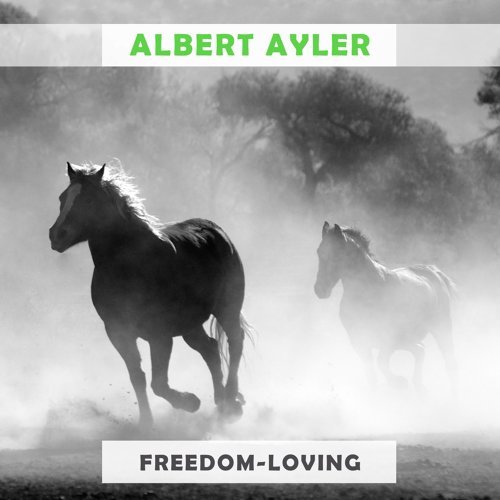 |
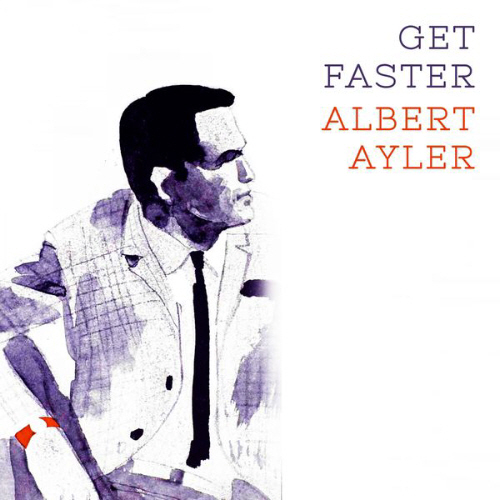 |
||||
|
What’s New October - December 2019 is now in the Archives. *** February 1 2020
Albert Ayler Trio 1964 Prophecy Revisited Last November I indulged in a little speculation concerning the next Ayler release from HatHut in their ezz-thetics series. There was a hint in the sleevenotes of their last Ayler release, Albert Ayler Quartets 1964 Spirits To Ghosts Revisited, that the new one would unite Spiritual Unity with the live recording of the Ayler Trio, Prophecy, which seemed to make sense, but also meant that the iconic cover art of Spiritual Unity would have to be sacrificed. Turns out we were wrong and when Dirk Goedeking pointed me in the direction of the HatHut site, I found the following cover for Albert Ayler Trio 1964 Prophecy Revisited, which combines the original Prophecy with the extra tracks from the same June 14th, 1964 concert at the Cellar Café, New York. The history of the Prophecy album is an odd one. The concert (‘gig’ is probably a more accurate term but I don’t wish to align myself with the hepcats) was recorded by Paul Haines and the original five tracks were released in 1975 as ESP 3030. The additional tracks first surfaced in a German release in 1996, Albert Smiles With Sunny, which was a double CD set (InRespect IR 39 501). Now I’m quoting from my own site: “The origin of Albert Smiles With Sunny is explained in the following passage in the Sunny Murray interview in the Paris Transatlantic magazine where Mr. Murray discusses the activities of Bernard Stollman, the founder of ESP records: ‘He also released “Prophecy” after Albert died, without Albert's signature, but because I also had a copy of the same tape I released mine through a company in Germany [“Albert Smiles with Sunny”, In Respect 39 501], as a correct move for me and Al. Bernard's so-called son tried to put the stops on my album, and finally did. However my tape was better quality than his and also at the correct speed, so mine sounds better. That tape's thirty-four years old, made up on 91st Street at Cellar Cafe [June 14th, 1964], where Paul Bley and all those cats first started playing, the white avant-garde guys, Barre Phillips, Gary Peacock... Gary Peacock had just gotten in from California to play with Miles, and he wanted to play with us.’ The additional tracks then turned up in the Holy Ghost box set, but with better titles and an added snippet. Following the sequestration of the Holy Ghost material by ESP, the latter released another version in December, 2015 as ESP 4076, Bells & Prophecy: Expanded Edition. A double CD set, Prophecy joined by Bells on the first, the additional six Cellar Café tracks from Holy Ghost on the second. The new HatHut version, being a single CD release, has had to lose one of the shorter tracks (‘Sweet: first variation’ [6:29] on Albert Smiles With Sunny, ‘Spirits (incomplete)’ [6:38] on Holy Ghost), which is a shame. The HatHut version has been remastered and has the blessing of the Ayler Estate. |
|||||
 |
|||||
 |
|||||
|
Albert Ayler: The Early Albums Collection I’d be very surprised if permission from the Ayler Estate was ever sought for this 4 CD box set, containing 8 early Ayler albums, or should that be 7. Prophecy is in there, but so is Albert Smiles With Sunny. |
|||||
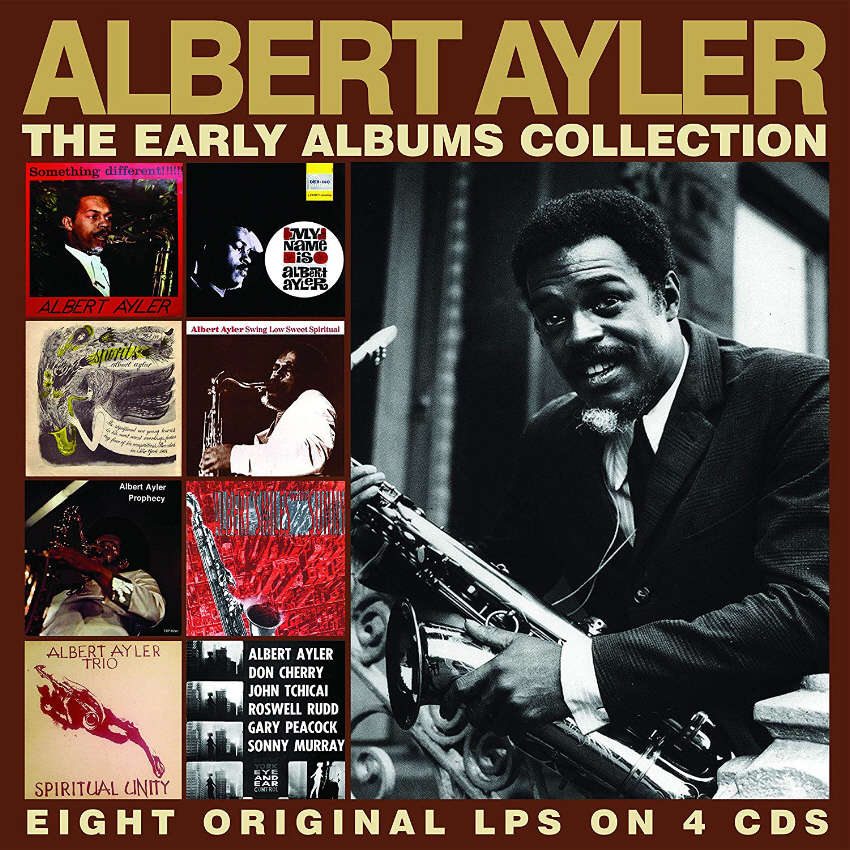 |
|
It’s been a while since I tried to sort out European copyright law as it applied to sound recordings and I don’t really want to go down that rabbit hole again. Briefly: Copyright on recordings used to last for 50 years. This was then extended to 70 years after Sir Cliff Richard and others complained because they had a picture in the attic or something (Sonny Bono did the same thing in America and there the term was extended to 100 years). The new rule came in on 1st November 2013 and only applied to recordings which were still in copyright at that date. So, recordings made before 1st November 1963 were now out of copyright and in the public domain (which explains all those mp3 versions of My Name Is Albert Ayler with the weird titles). However, there is also the matter of the date when recordings are released. So, Prophecy, although recorded in 1964, was not released until 1975 and the extra tracks on Albert Smiles With Sunny didn't appear until 1996, so, technically they are not in the public domain until 2045 and 2066 respectively. But, I'm no lawyer, so maybe I've got this all wrong. And it still doesn't explain why that November 2013 date doesn't seem to apply anymore, since apart from the first three LPs in the set, the rest were recorded in 1964. But, I’m not complaining. I’ve bought a lot of these sets and being a proud member of the underclass (retired), I appreciate them for their price. What you don’t get with these sets is information. They always include a little booklet which gives a list of the albums and the tracks, but no personnel or recording details. Which is a bit annoying, since it would take them a couple of hours at the most to track down the information and stick that in the booklet. The set is not being released until next month so there’s not a lot of information about it, but the blurb on amazon gives a track list. As with all these box sets you do just get the original albums, no extra tracks from later CD versions. So there’s no fifth track on Spiritual Unity and none of the extra material from the Goin’ Home CD version of Swing Low Sweet Spiritual. To prevent needless repetition you only get the second CD from Albert Smiles With Sunny, that’s the one with the extra tracks from Prophecy. * This month’s issue of the German magazine, Jazz Podium, features two recordings which may be previously unknown works by Albert Ayler. I came across these on youtube, with the following information (translation by google): ‘You can hear "Piece A", a solo performance piece for instrument, played by an alto saxophone. The recording comes from a wire-sound recorder, which the trumpeter Nathan Horwitz, music colleague Albert Ayler’s from his youth, created in the 1950s and gave out of his hands only decades later. In the Jazz Podium 2/2020, Ben Young examines whether Albert Ayler is playing here.’ ‘You can hear "Piece B", the interpretation of a piece known as "Wimoweh". A trumpet plays the lead, supported by a saxophone voice and drummer. The recording comes from a wire-sound recorder, which the trumpeter Nathan Horwitz, music colleague Albert Ayler’s from his youth, created in the 1950s and gave out of his hands only decades later.’
|
|||||||||||
|
Here’s ‘Wimoweh’ (if only we knew if Albert Ayler was inspired by Karl Denver’s mad yodelling version):
|
|||||||||||
|
Patti Smith A couple of times I’ve mentioned Richard Koloda trying to track down Patti Smith’s reviews of Albert Ayler albums. I received an email from Hunter Duke with this magazine cover attached: |
|||||||||||
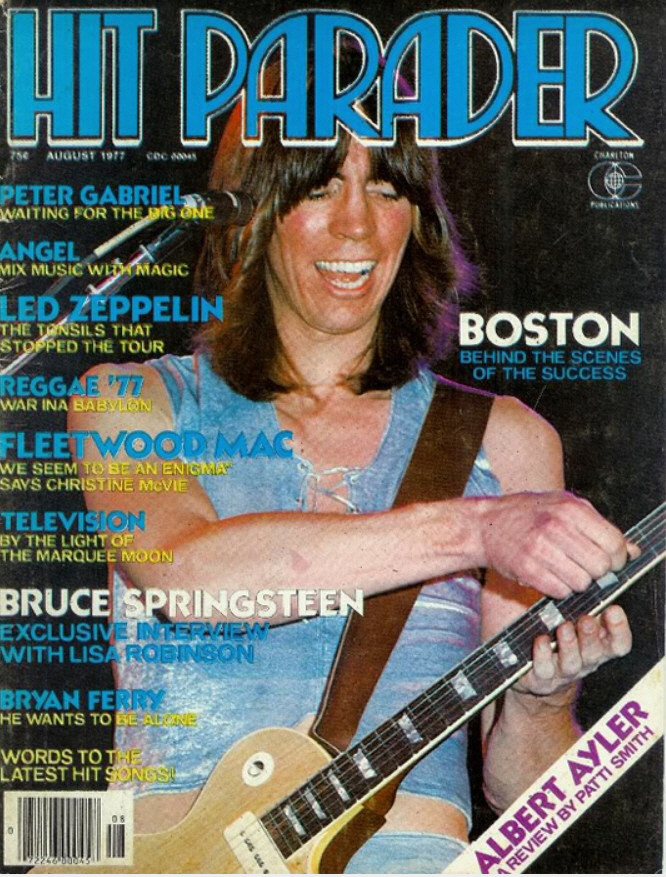 |
|||||||||||
|
Unfortunately I can’t find a copy of Hit Parader No. 157 (August 1977) online anywhere, but we’re getting closer. * Bits and pieces from around the globe There’s an article about the Italian Ayler tribute band, Ayler’s Mood, at gionadellamusica.it. And on youtube a lecture (with music) about Albert Ayler by Nikolay Rubanov (in Russian). And from Japan, an Impulse ad. |
|||||||||||
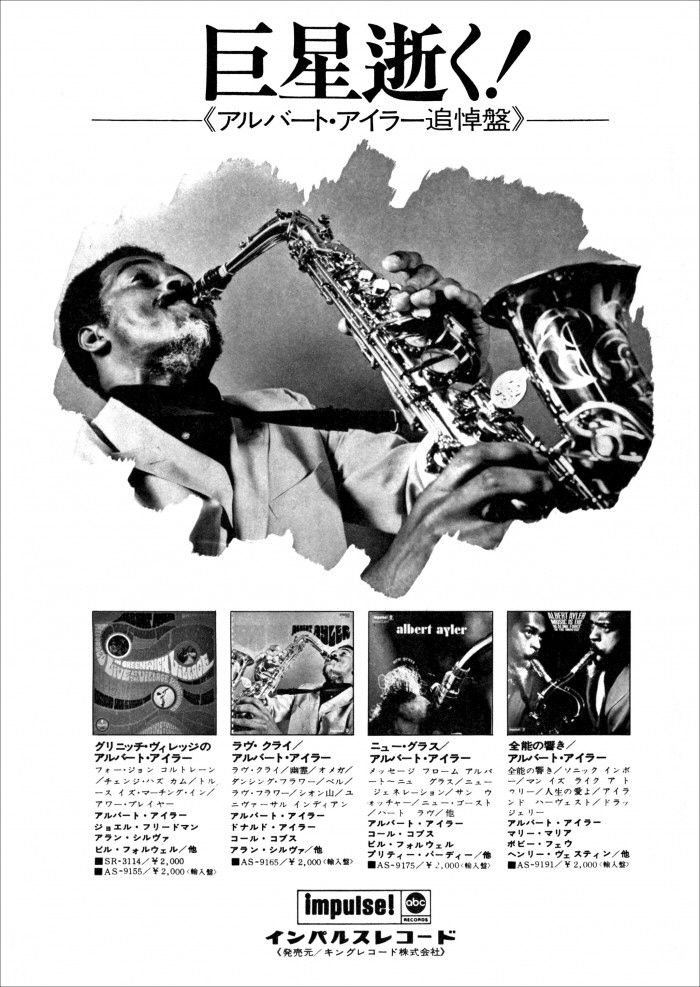 |
|||||||||||
|
And finally ... Dirk Goedeking sent the above, and also the below. Not much to do with Albert, but whoever posted it added this note: "New disney star wars will never see fan art this remarkable. Ladies and gentlemen: Ron Carter presents "Empire Jazz". Legend has it that #albertayler heard that storm trooper blowin that sax and just had to jump into the east river." |
|||||||||||
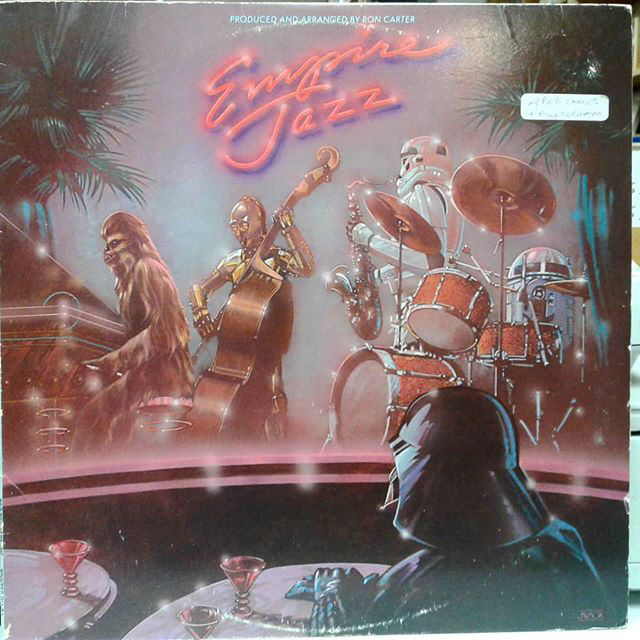 |
|||||||||||
|
Jazz Podium A little more information on the February edition of the German magazine, Jazz Podium, mentioned last month, courtesy of Dirk Goedeking: ‘It contains three articles on Albert: 1. “In unbefleckter Emphase” (In Immaculate Emphasis) by Adam Olschewski: A three page portrait, a.o. praising hathut’s last releases. 2. “Gone” by John Corbett: A four page prerelease of his upcoming book “The Last Days of Albert Ayler”. 3. “Ist er das?” (Is It Him?) by Ben Young. A two page article discussing the wire recordings “Piece A” and “B”. Although he’s leaving it open, he’s somehow suggesting that “A” is Ayler and “B” not. This is supported by Bobby Few’s judgement, who knew Albert’s playing in the 50s.’ The wire recordings are available on youtube and I posted them last month (see below). I asked Dirk for some more information on the source of the recordings, Nathan Horwitz, which was a name I’d never come across. He replied with: ‘a short summary from the article about Mr. Horwitz Nathan “Nate” Horwitz (1952 - 2019) played trumpet from 1949 - 1956 in Cleveland’s schools. He was one of Ayler’s Jam-Buddies in Cleveland. They did so mostly in Bobby Few’s house. Albert also visited Nate’s house, where the wire-recorder was located. Nate wanted to document his own playing as well as players of his musical circle. Both recordings presented were made between 1952 and 1956. Horwitz, who died last year, remembered that his Ayler recordings should be on these two or three reels. Piece A and Piece B are the recordings containing saxophone.’ And Richard Koloda found another mention of Mr. Horwitz, in Mark Gridley’s 2007 article, ‘ Misconceptions in Linking Free Jazz with the Civil Rights Movement’: ‘How Do Jazz Styles Originate? Though the present article is about what did not cause free jazz, it may be useful to mention what did cause free jazz and to distinguish the paths used by a few significant artists. Whereas the free-form performances of Tristano, Giuffre, Rogers, et al were created by musicians who were thoroughly facile in basing improvisations on the movement of chords, the free-form performances of Coleman and Albert Ayler represent playing by improvisers who were not facile in devising jazz lines compatible with chord progressions. Tristano, Giuffre, Rogers, et al chose not to set harmonic guidelines beforehand, even though they could if they had wished. By contrast, Ayler and Coleman improvised solos despite not knowing how to devise lines that directly reflected chordal accompaniments. Documentation for this latter situation is presented next. Trumpeter Nate Horwitz was a colleague of Ayler in their hometown of Cleveland. Horwitz said that Ayler did not understand how to devise a jazz solo from standard chord progressions. Bassist Andre Condouant recalled Ayler occasionally sitting in with the band of Al Lirvat at the café La Cigale in Paris, France. “He knew the repertoire but couldn’t improvise so much; he played like an amateur . . . . He would play ‘I’ll Remember April’ or stuff like that, and was unable to stick to even the basic harmonies”. This is illustrated in Ayler’s 1962 recordings of “On Green Dolphin Street” and “Summertime,” in which he played with a pianist, guitarist and bassist who were following the chord changes and providing standard jazz accompaniment. Note that reports that Ayler knew some Charlie Parker solos reveal only that he knew the lines, not necessarily that he understood how they related to their chordal accompaniments. It did not demonstrate that Ayler understood bebop and only chose to ignore its technique.’ * Three Concerts Dirk Goedeking also sent me details of two Ayler-related concerts this month: A Tribute To Albert Ayler at the Vortex in London on March 16th featuring Alex Bonney (t), James Allsopp (ts), Dylan Bates (v), Olie Brice, Thodoris Ziarkas (b) and Tim Giles (d). “This newly formed sextet brings to the Vortex the intensity of Albert Ayler’s extraordinary compositions and dense soundscapes. Inspired by Alex Bonney’s 2007 tribute recording to Ayler’s music, this original new line-up consists of eclectic and dedicated improvisers from the London scene, bringing to life the spirit of one of the most radical innovators of the free-jazz movement in history.” And The Way Ahead (featuring Niklas Barnö (t), Mats Äleklint (tb), André Roligheten (saxes, bcl), Kristoffer Alberts (saxes), Mattias Stähl (vib), Ola Høyer (b) and Tollef Østvang (d)) play “Bells, Ghosts and other Saints” in St. Johann's Alte Gerberei (in Tyrol, Austria) on March 28th. ‘The title of the debut album of this septet says almost everything: “Bells, Ghosts and other Saints” refers to pieces by the free jazz titan Albert Ayler. And the seven gentlemen from Scandinavia, all highly valued representatives of contemporary jazz music, pay homage to this with fervor and due respect. Inspired by gospel and blues, you walk here collectively and also as a soloist in the footsteps of black music, but the band members always live up to their name - The Way Ahead. Brilliant!’
And then there was one we missed last December. |
|||||||||||
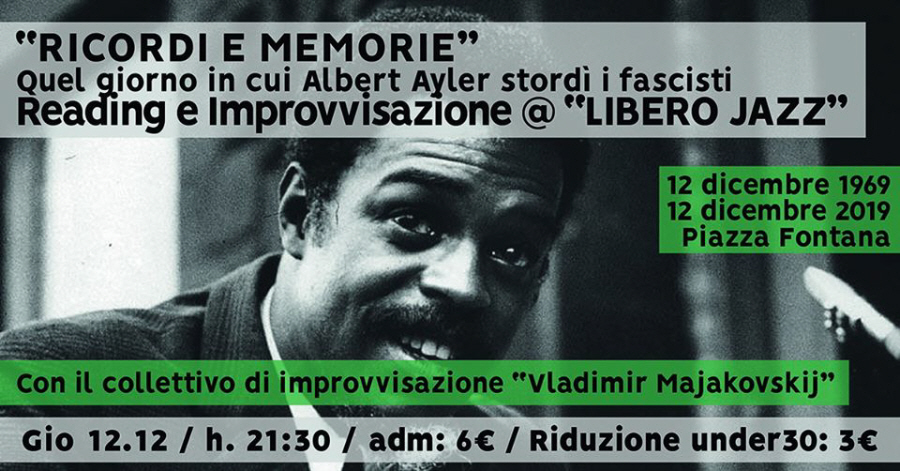 |
|
"Ricordi e memorie - Quel giorno in cui Albert Ayler stordi i facisti" ("Memories and memories - That day when Albert Ayler stunned the fascists”) took place at "Circulo Cooperativo Libero Pensiero" in Lecco, Italy on 12th December, 2019. A combination of readings and music by the improvisation collective, Vladimir Mayakovsky, in memory of the 50th anniversary of the fascist terror attack on Milan's Piazza Fontana. * The Cellar Café Following on from last month’s item about the new Hathut release of the Cellar Café tapes, Albert Ayler Trio 1964 Prophecy Revisited, Dikko Faust sent some further information about that particular venue, as found in Ben Young’s Dixonia: A Bio-Discography of Bill Dixon (Greenwood Press, 1998, pp. 442). As well as the Cellar Café there’s also a few other mentions of Ayler in the book. Here’s a selection of pages. My particular favourite is Dixon’s assessment of Don Ayler (p.102): |
||||||||||||||||||||
 |
||||||||||||||||||||
|
Here’s a selection of pages from Dixonia: A Bio-Discography of Bill Dixon: |
||||||||||||||||||||
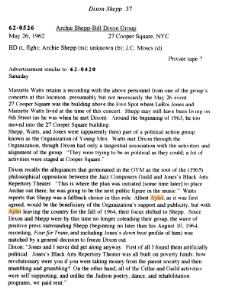 |
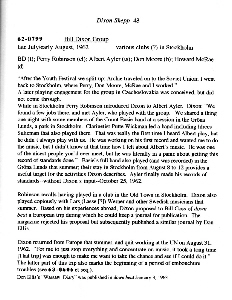 |
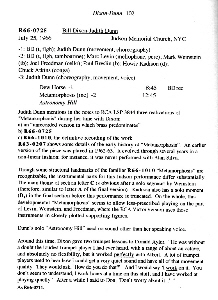 |
||||||||||||||||||
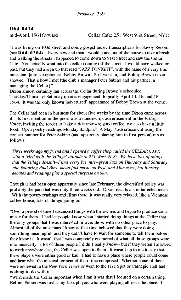 |
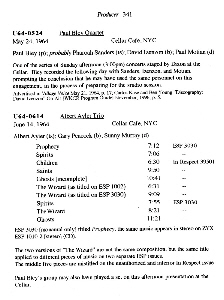 |
|||||||||||||||||||
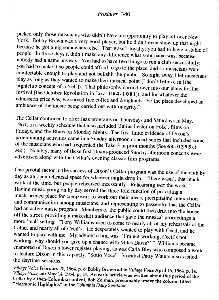 |
||||||||||||||||||||
 |
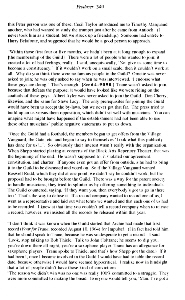 |
 |
||||||||||||||||||
|
Archie Shepp (oh, didn’t he ramble) Last month I mentioned the upcoming release of a box set of Albert Ayler’s early recordings and I commented that these boxes, of which there are many, tend to be short on discographical information. The Ayler box won’t be out till March 6th, so I will deal with it in the April update. However, I also purchased a similar box of early albums by Archie Shepp, which I believe is from the same company (difficult to keep track), and which does have some recording details (at least the personnel list) in its little booklet. So, apologies are in order. The first Shepp album in the box is the ‘Bill Dixon Quartet’ from 1962, so that relates to the item above, and I also came across an interesting article on the New England Public Radio site, originally published in 2012, which deals with a connection between Shepp and Miles Davis. Apparently Shepp provided the avant-garde element in the George Wein European Tour of 1967, the year after Albert Ayler. O.k., (I’m stretching here for some connection to Albert, but I’ll just let it go at that. As I say, I found the article interesting, but I’m not sure whether I buy the ‘Shepp influenced Miles Davis to change his music’ thrust of the piece. * AACM Again, the connection to Ayler is minimal, but I thought I’d mention it. I came across A Power Stronger Than Itself: The AACM and American Experimental Music by George E. Lewis online and had a look for mentions of Albert Ayler. A few, but mostly grouped with the other Free Jazz pioneers. But there was this (from the Introduction, p. xxxi), which gave me pause for thought: “The stakes are quite high in this endeavor, as I realized when a friend alerted me to a letter in the British magazine Wire from the African American experimental musician Morgan Craft, living in Italy at this writing. I found his remarks both poignant and terribly telling: So here we are in the year 2005 and I actually agree to sit down and write about being black, American and experimental in music. The genesis springs from looking at a magazine devoted to challenging, progressive musics from around the world, and seeing their top 50 list for last year (The Wire 251) and the only black Americans were rappers (three) and old jazz era men (one living, one dead). So I bring up this observation about the lack of a black American presence on the avant garde scene under the age of 50 just to see if maybe I’m not paying attention. I’m constantly fed this steady stream of future thinking folks from Germany, Japan, UK, Norway, etc, but when it comes to America all I hear about is the genius that is free folk or if it’s black it must be hiphop, jazz, or long dead. How many more articles on Albert Ayler do we really need?” * This month’s version of Ghosts is from Karl Young’s album, Lost In The Wood: “A jazz CD featuring the haunting sound of the shakuhachi in an organic combination with marimba, flugelhorn, bass and a variety of percussion instruments, playing standards, original material, and novel arrangements of traditional pieces.”
|
||||||||||||||||||||
|
I quite like the fact that if you put Karl Young in google, Carl Jung comes up as well. I’m a simple soul. * And finally ... Chris Norman posted this on the facebook Ayler Group: |
||||||||||||||||||||
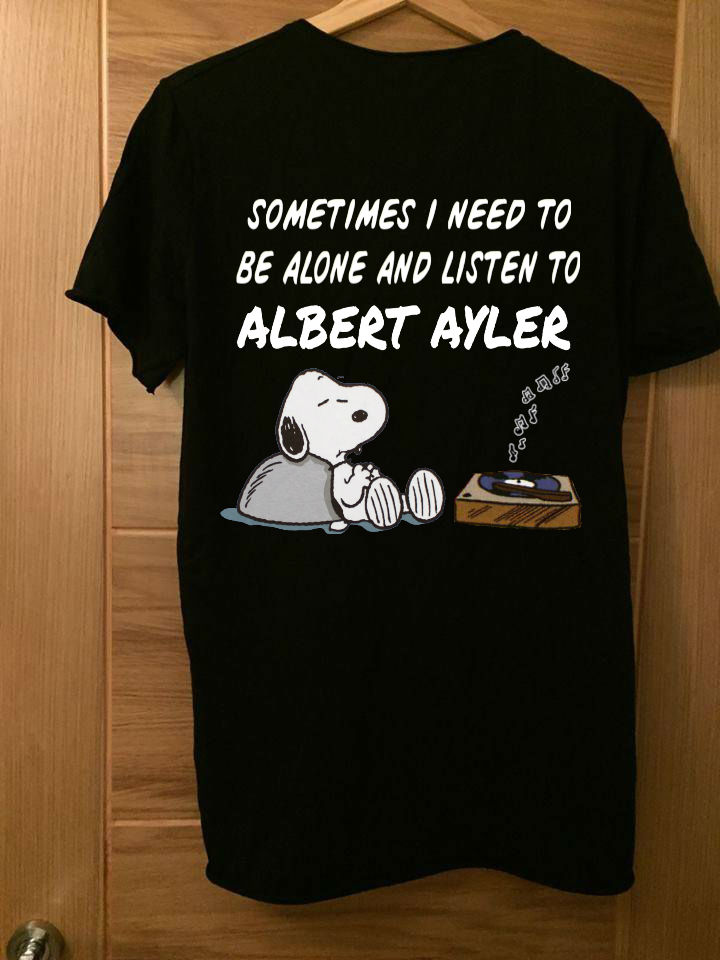 |
||||||||||||||||||||
|
April 1 2020
Albert Ayler: The Early Albums Collection I’ve mentioned this new box set from Enlightenment a couple of times, but now I’ve got a copy. The covers and booklet are available on the Compilation Covers page, but here’s the front (again) and the pages with the relevant information: |
||||||||||||||||||||
 |
||||||||||||||||||||
 |
||||||||||||||||||||
 |
||||||||||||||||||||
|
I should say at the outset that I have no problem with these box sets from Enlightenment. One of the main objections was the lack of discographical information, but they seem to have bowed to pressure and spent the two minutes required to look up the information. Another one is the occasional omission of an odd track here and there in order to cram as many albums into the box - I’ll get to that later. When you read the amazon reviews for these box sets there always seems to be a member of the angry brigade complaining about the sound quality, but, having only one working ear (and that seemingly desperate to retire) and a CD player which seems to think I’m a 20 year old hippity-hop fan who requires the bass to be turned up to maximum in order to render everything muddy, I really can’t comment. For me, it’s the price. 8 LPs for the price of 1. Or, to be precise, seven and a half ‘albums’, since Albert Smiles With Sunny was a double CD and you’re only getting the second one here - understandably since the first CD was Prophecy. The second volume of Something Different!!!!!, is omitted, but as far as I know this never received even the limited release of the first volume, and then for a long while it was only available as a Japanese import. Other than that the box contains Ayler’s first eight albums in the order in which they were recorded, rather than released. Something Different!!!!! recorded 25th October, 1962 in Stockholm, which only received a wider recognition around 1969/1970 when it was re-released as The First Recordings. My Name Is Albert Ayler recorded 14th January, 1963 in Copenhagen, complete with Albert’s spoken introduction, which was omitted from some LP versions. No excuse for mispronunciations of his name. Spirits recorded 24th February, 1964 in New York for the Danish Debut record label. Later releases were renamed Witches and Devils, which compounded the error (not corrected here) of assigning the composing credit for that track to Ayler instead of trumpeter, Norman Howard. Swing Low Sweet Spiritual recorded 24th February, 1964 in New York at the same session as Spirits (with a different line-up featuring Call Cobbs on piano). This recording of straightforward versions of spirituals and folk songs was rejected by the Debut record company and was not released until 1983 on the Dutch Osmosis label. In 1994 a CD version with three extra tracks was issued on the Black Lion label under the title Goin’ Home. One of the incidental pleasures of this box set is having the two halves of that recording session on one CD. Of all the albums in the box, I think Albert’s nod to his gospel roots will have Ayler neophytes scratching their heads the most. Prophecy recorded 14th June, 1964 at the Cellar Cafe, New York. Chronologically the first recording by the first of Ayler’s great groups, the trio with Gary Peacock and Sunny Murray. This live recording predated Spiritual Unity by a month, but the material was not released until 1975, five years after Ayler’s death. Albert Smiles With Sunny recorded 14th June, 1964 at the Cellar Cafe, New York. The original tape for the ESP Prophecy album was provided by Paul Haines. The 90 minute tape for Albert Smiles With Sunny came from Sunny Murray and was not released until 1996, on the German InRespect label. This is the ‘half album’ in the box - although, judging by the tune titles and the timings, I suspect that this version of Prophecy has also been taken from Albert Smiles With Sunny, which means that the two CDs have been squeezed onto a single disc, so there’s been some editing here and there. ‘here’ is track 7, listed as ‘Ghosts (Another Variation)’ (although it isn’t) with a runtime of 8:36, whereas on Albert Smiles With Sunny it runs for 10:20. ‘there’ is the final track on the disc, 9:22 on the original Albert Smiles With Sunny, 9:25 listed on the box, but actually running for just 8:00. Also, neither of these tracks are faded out, so there’s a cut somewhere. I leave it to those with ears to find the gaps. Coincidentally in the sleevenotes to Albert Smiles With Sunny there’s this note: “doing this project we struggled what to do: one CD or a Double-CD; there have been lots of arguments for both ideas, as the original material/tape is about 90 minutes, in honour to this project (and of course the listener) we have to do two CDs.” The same argument must also have raged at HatHut since their version of the same material from the Cellar Cafe opts for a single CD and gets round the problem of space by simply dropping one of the tracks - track 6 in this box. Spiritual Unity recorded 10th July, 1964 in New York. The first truly iconic album of Albert Ayler - ESP-DISK 1002. Of course this is the usual 4 track release. The original pressings of the LP had a different version of the third track, ‘Spirits’, which was then replaced in all subsequent issues until a Japanese gold CD in 1996, and then the ‘50th Anniversary Expanded Edition’ released by ESP in 2014. New York Eye And Ear Control recorded 17th July, 1964, at the home of Paul Haines in New York. Another iconic LP released by ESP, but recorded by Michael Snow for his short film of the same name. More of a group effort than an Ayler-led ensemble, it has been compared to Ornette Coleman’ ‘Free Jazz’ and John Coltrane’s ‘Ascension’. * Albert Ayler Trio 1964 Prophecy Revisited (again) I am conscious of feeling a little ‘soiled’ by my enthusiasm for Enlightenment boxes when such a highly-regarded and respectable record company like HatHut is continuing to produce newly remastered, beautifully packaged CDs of the recordings of Albert Ayler, which are also fully authorised by his Estate. So, there’s a review of Albert Ayler Trio 1964 Prophecy Revisited on the France Musique site, and the sleevenotes are here (courtesy of Discogs, via Dirk Goedeking). * Aad Bos (18/6/1931 - 1/3/2020) Aad Bos, Dutch broadcaster and jazz producer, died on the 1st March. There’s an obituary on Noordhollands Dagblad and he is mentioned here since he was one of the producers of The Hilversum Session. * The blistering cosmic music of The Black Unity Trio Is the title of a fascinating interview with the drummer with the Black Unity Trio, Hasan Shahid, in The Wire. The interview was conducted by Pierre Crépon, who credits Mutawef A. Shaheed (Cleveland friend of the Ayler brothers and bassist on the La Cave sessions in the Holy Ghost box) with putting him in touch with Hasan Shahid. The Black Unity’s legendary LP, Al-Fatihah, is due to be reissued later this year. * The 10 most groundbreaking free jazz albums of all time Here’s a rather idiosyncratic list of the 10 most groundbreaking free jazz albums of all time. Spiritual Unity comes in at No. 7. * Man with Red Saxophone (For Albert Ayler) case Is the title of a piece by David Elliott, whose work is reviewed in this article in Quebec’s La Presse. |
||||||||||||||||||||
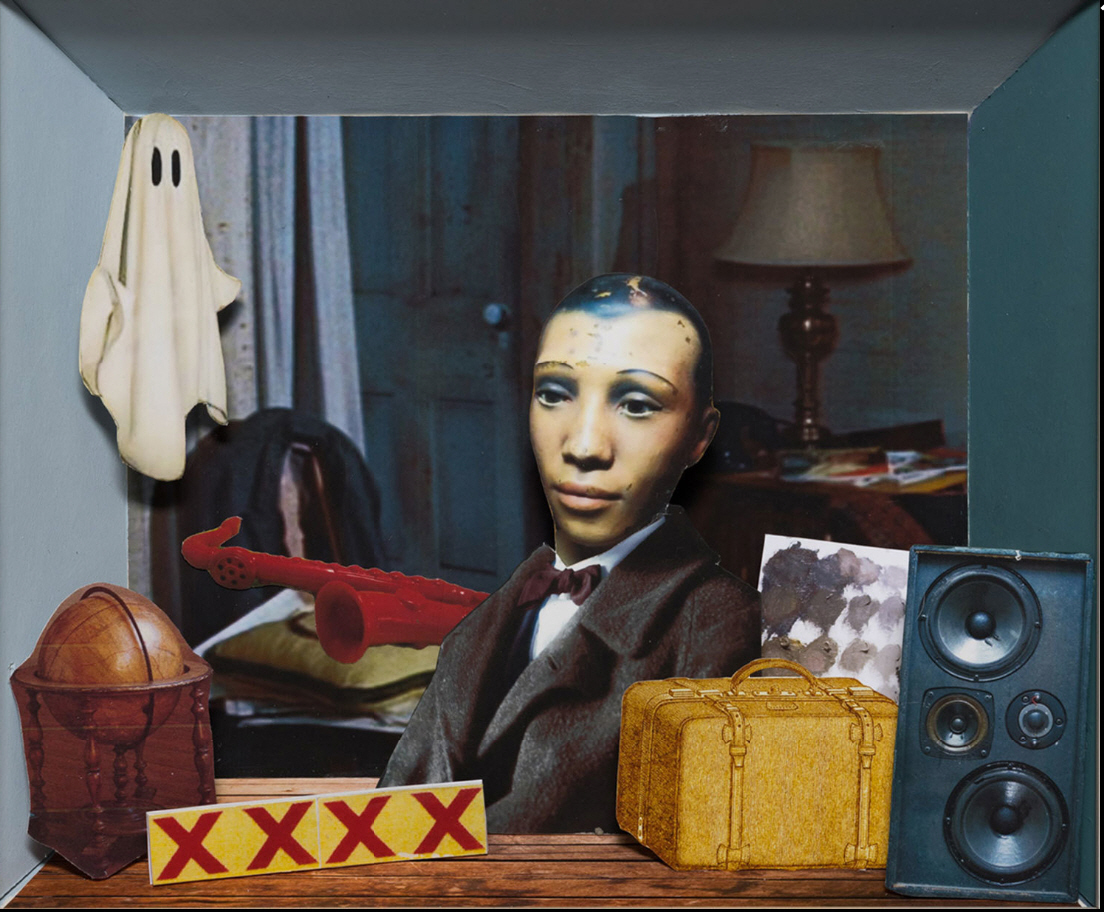 |
|
Films Downbeat have a list of Nine More Jazzworld Movies To Stream While You’re Stuck At Home, following on from their Jazzworld Movies To Binge While You’re Stuck At Home. You may wonder why there’s a photo of Albert Ayler gracing the former, or why, indeed, the link states ‘Ten More Jazzworld Movies ...’. Well, that’s because, originally Kasper Collin’s My Name Is Albert Ayler was on the list, so presumably Downbeat got a call from the lawyers and pulled it. I don’t know whether this is still the case, but the film was available at the Internet Archive, to watch or download. If the link is dead, don’t be surprised. And another odd tale from the world of the pictures. An article on The Spool site compares Spike Lee’s 2014 vampire film, Da Sweet Blood of Jesus, with its 1973, Bill Gunn directed original, Ganja & Hess, including the following bit: ‘In a key, “turning” sequence early on in Gunn’s film, its themes converge. Dr. Hess Green (Duane Jones) is an anthropologist and African antiquities scholar who wakes in his bed to an ax-wielding assault from his house guest and admirer George Meda (Gunn). The two tumble to the ground, Meda plunges an Ashanti dagger into Green’s chest, and the camera cuts away — first, to a framed photo of free jazz pioneer Albert Ayler; second, to a wood engraving of Actaeon, a mythological figure who gazed on the goddess Artemis bathing and was turned into a stag, only to be hunted and killed by his own dogs. We then cut to Meda at a typewriter, composing a philosophical treatise addressed to “the Black male children” — “For love is all there is,” he writes, “and you are cannon fodder in its defense.” — before taking a bath and shooting himself in the head. A mysteriously reincarnated Hess Green finds his own murderer naked and lifeless on the floor, drops down, and thirstily laps up his blood. In Lee’s version, we lose the cutaways and letter but keep the central evocative action. This film is less buzzing with revolutionary fervor, though it’s got anger enough to spare — at the preening white society to which Green was an outsider long before he became addicted to blood; at the systems that compel wealthy Black America to feed on the people. (Scout Tafoya’s essential Unloved entry explores this.) It’s ironic that Ayler should be omitted, though. His “energy music” — rooted in Black musical traditions, borrowed and transformed with gleeful abandon, with a frequent return to exuberant marches amid its tonal whiplashing — would fit right in, thematically and formally; a Pitchfork profile once described it as an “unusual mix of the cerebral and highly technical and the nakedly emotional.” It’s hard to imagine a more apt description of Lee’s late-period filmmaking itself. Ayler drowned off the Congress Street pier three years before Ganja & Hess, not far from the Red Hook sign that opens its remake, so perhaps his spirit isn’t through with this material, either.’ Ganja & Hess is available on youtube, and the sequence described above starts at 18:25. Here’s the cutaway to the Ayler photo: |
||||||||||||
 |
||||||||||||
|
And finally ... Just a couple of items from Dirk Goedeking. First, the other side of the sleeve for the 45” EMI/Stateside single taken from New Grass, which as Dirk notes: ‘The ad on the backside with “The Beach Boys” and “Cliff Richard” gets the direction of “New Grass” perfectly clear.’ |
||||||||||||
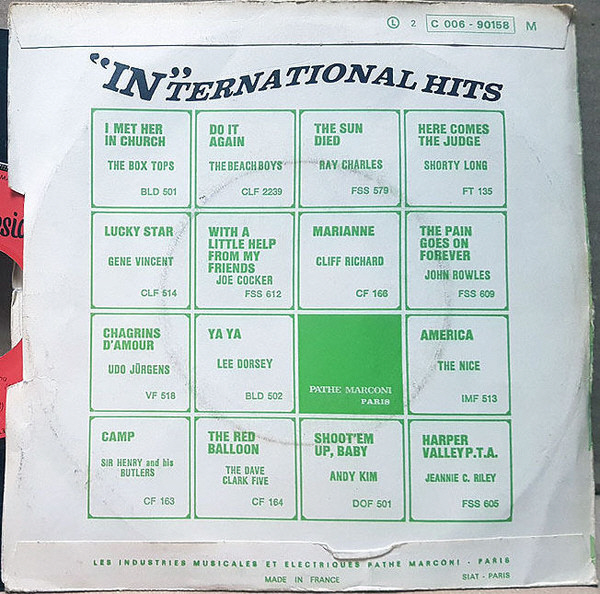 |
||||||||||||
|
Which gives me the excuse to drag the front cover from the outer reaches of the site in order to spread a little happiness in these grim times: |
||||||||||||
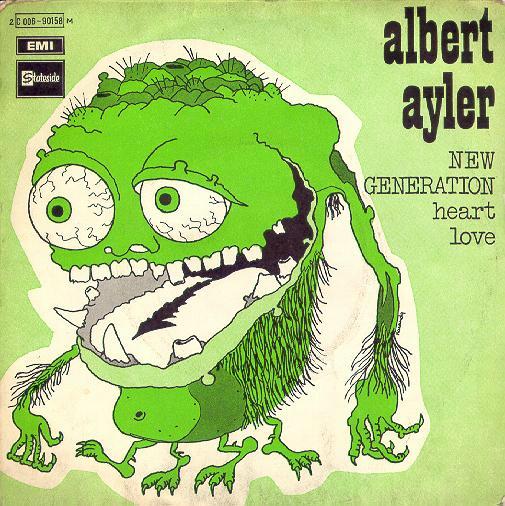 |
||||||||||||
|
Maybe you fancy spending your time in lockdown learning to play the piano? Dirk found this on a twitter group. It’s from page 3 of the Columbia Daily Spectator of 13th February, 1952: |
||||||||||||
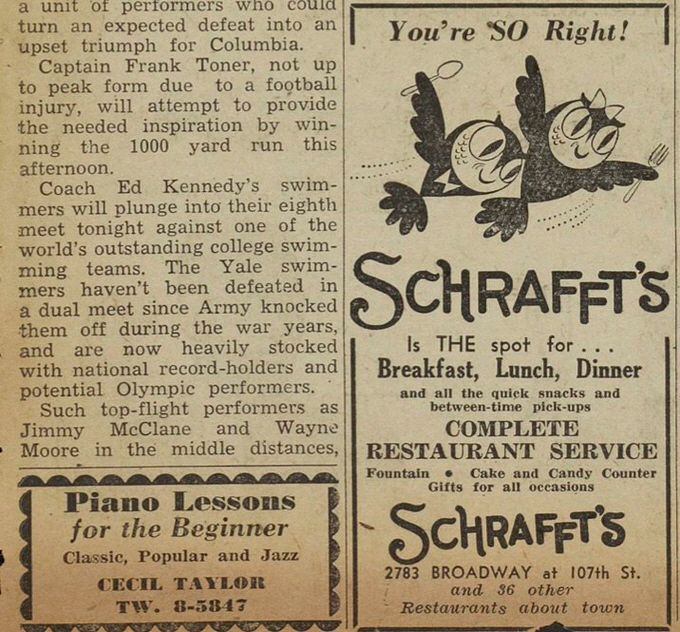 |
||||||||||||
|
*** News from 2004 (January - June) 2004 (July - December) 2005 (January - May) 2005 (June - December) 2010 (January - June) 2010 (July - December) 2011 (January - May) 2011 (June - September) 2011 (October - December) 2012 (January - May) 2012 (June - December) 2013 (January - June) 2013 (July - September) 2013 (October - December) 2014 (January - June) 2014 (July - December) 2015 (January - May) 2015 (June - August) 2015 (September - December) 2016 (January - March) 2016 (April - June) 2016 (July - August) 2016 (September - December) 2017 (January - May) 2017 (June - September) 2017 (October - December) 2018 (January - May) 2018 (June - September) 2018 (October - December) 2019 (January - May) 2019 (June - September) 2019 (October - December) 2020 (May - August) 2020 (September - December) 2021 (January - March) 2021 (April - July) 2021 (August - December) 2022 (January - April) 2022 (May - August) 2022 (September - December) 2023 (January - March) 2023 (April - June) 2023 (July - September) 2023 (October - December) 2024 (January - March) 2024 (April - June) 2024 (July - September) 2024 (October - December)
|
||||||||||||
|
Home Biography Discography The Music Archives Links What’s New Site Search
|
||||||||||||
